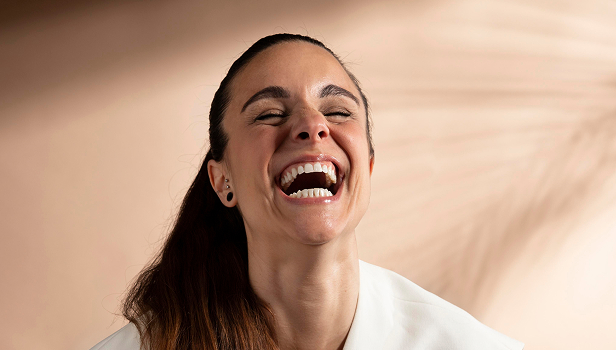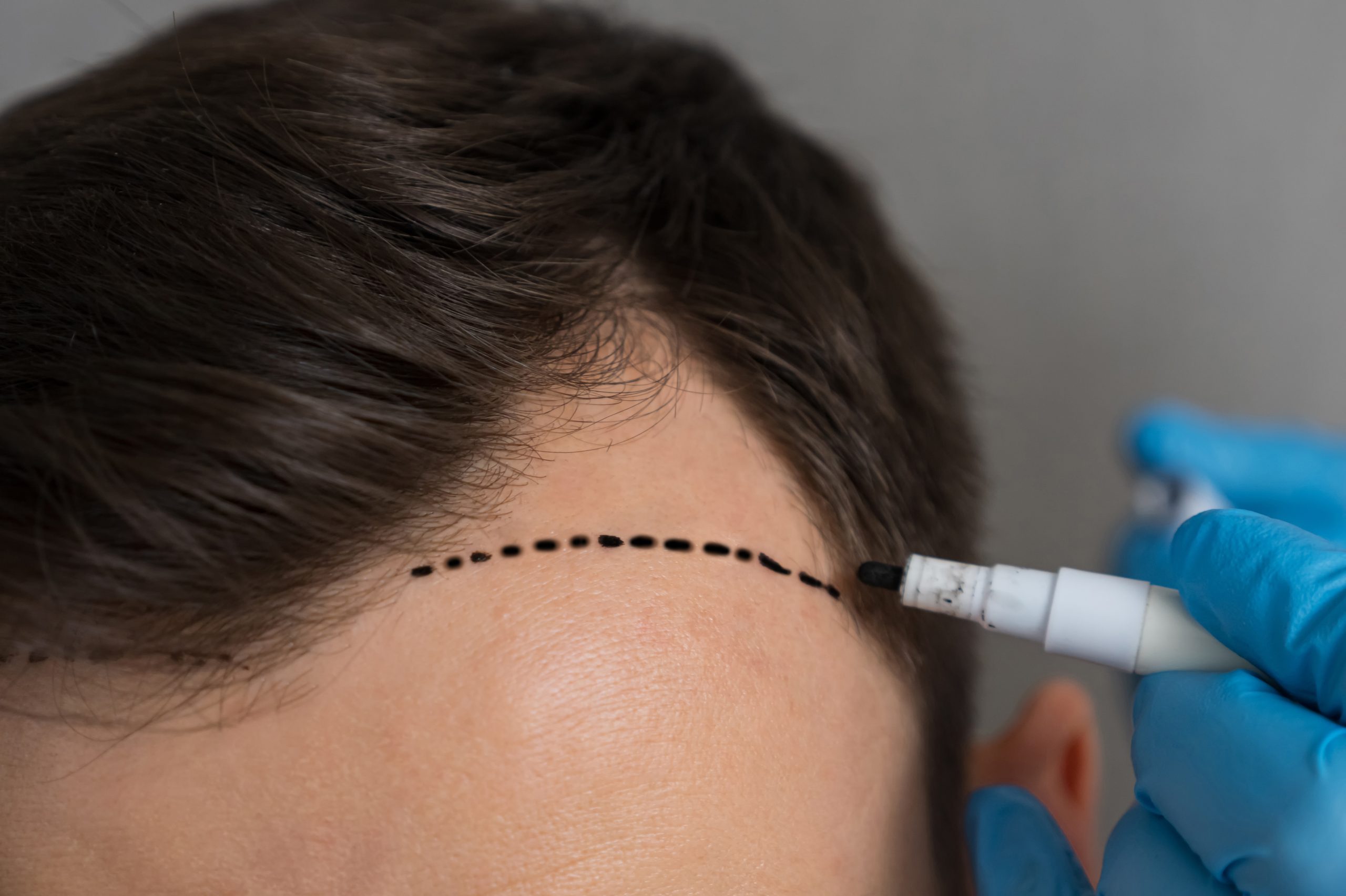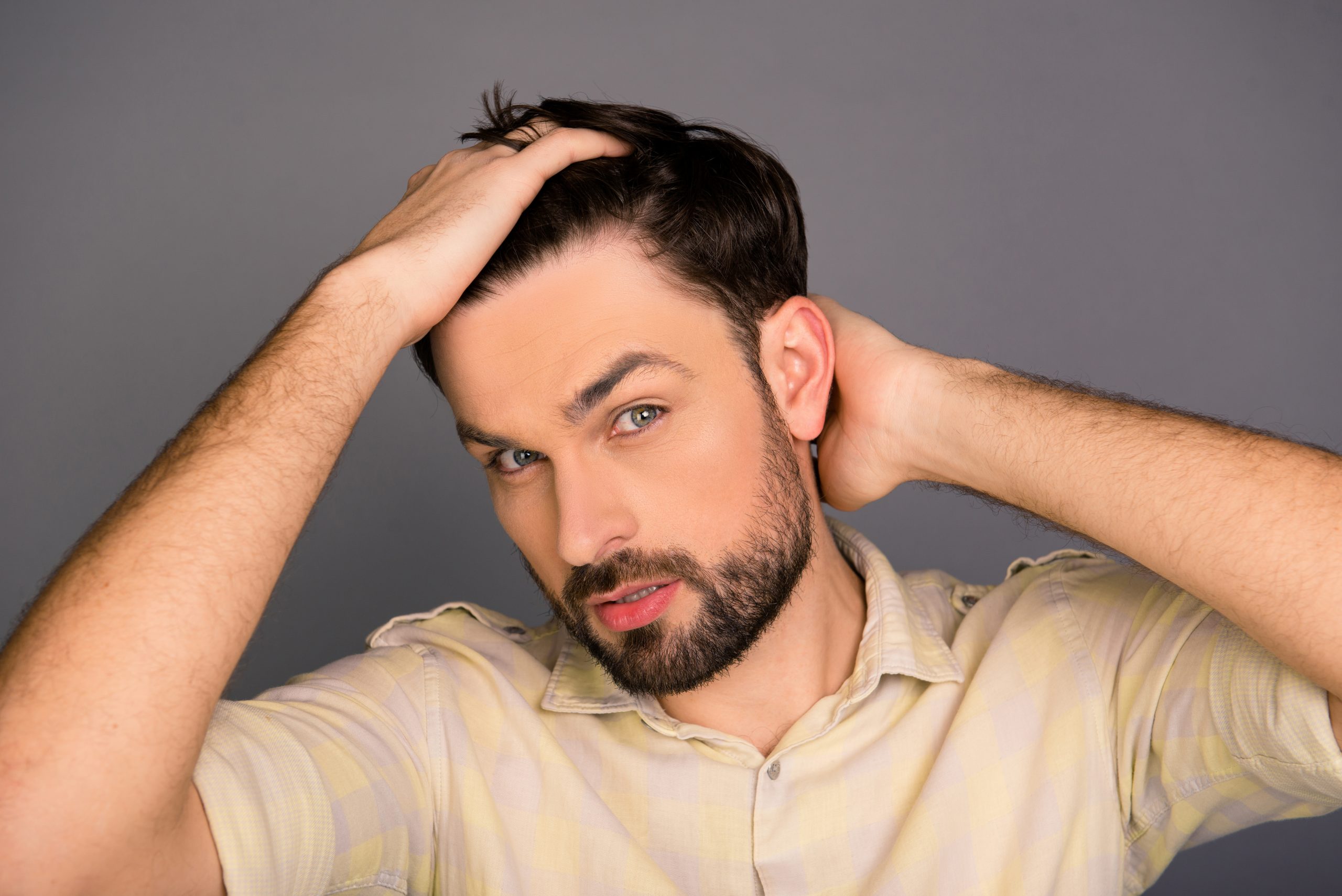The 3-month hair transplant anniversary is my favorite! Your hair transplant results after 3 months highlight a significant stride in your recovery process as you will likely begin to observe the first signs of hair growth in the recipient area. You’ll read all about here, but first – why not download our catalog?
3200 Grafts – Romania


Before

After
3200 Grafts – Romania


Before
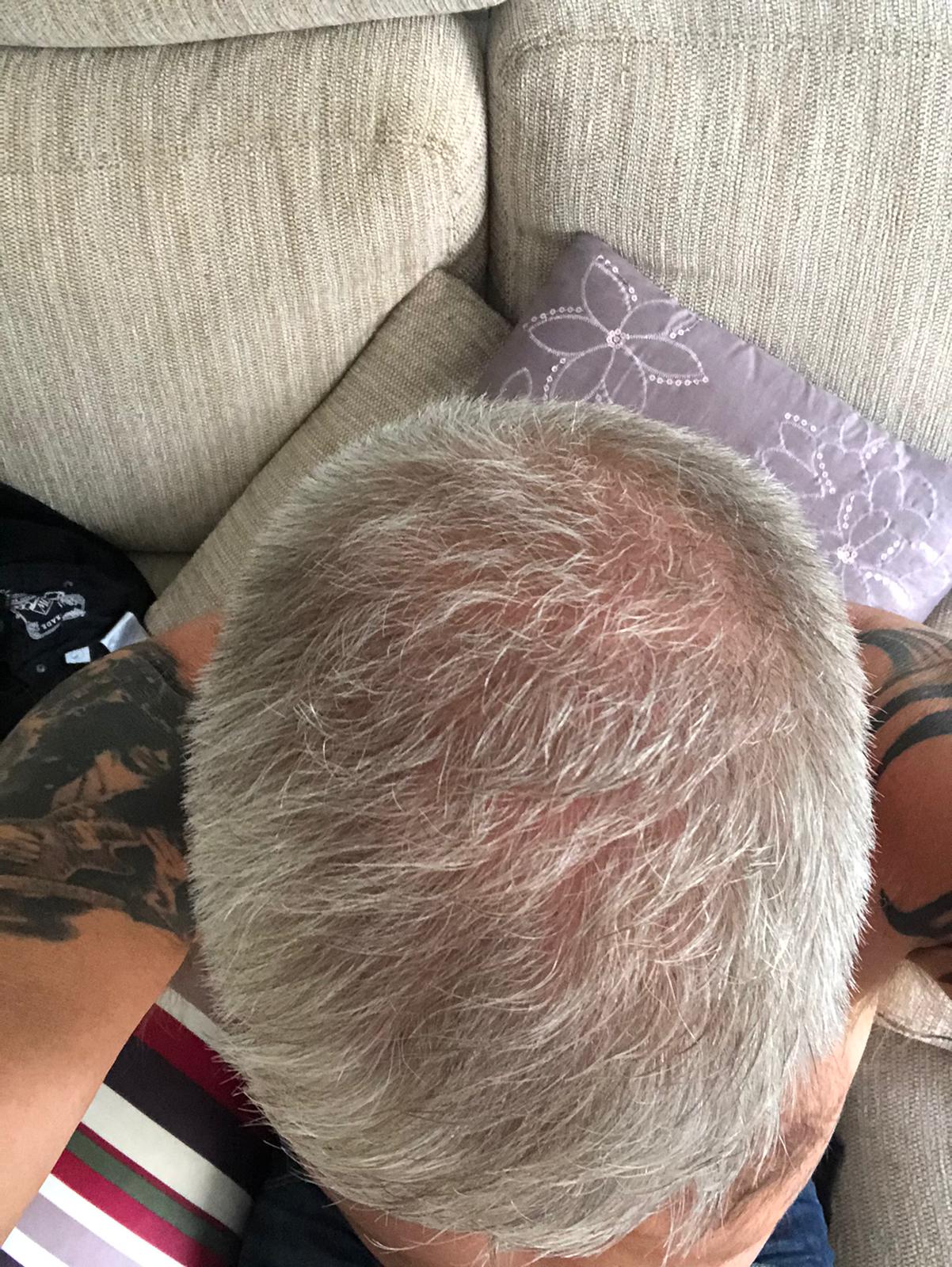
After
Expected Hair Transplant Results After 3 Months
Undergoing a hair transplant is a significant decision, and your commitment to the recovery process is key to achieving the best results. Three months post-surgery marks an important milestone in this journey. By this point, you’ve already passed through the initial healing phases, and your new hair is beginning to take root.
In this guide, we’ll walk you through what to expect at the three-month mark, offering insights into your hair’s growth progress, post-operative care, as well as addressing challenges you may encounter.
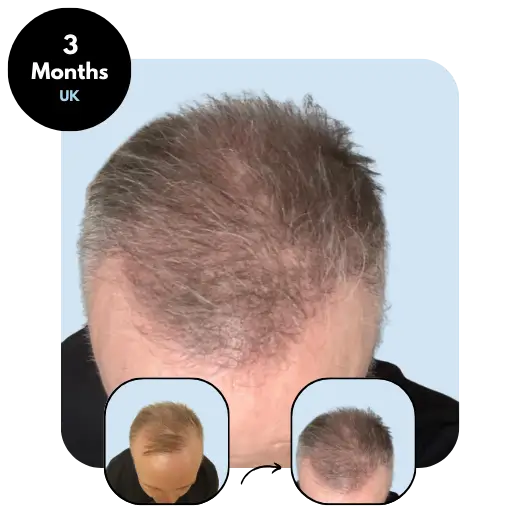
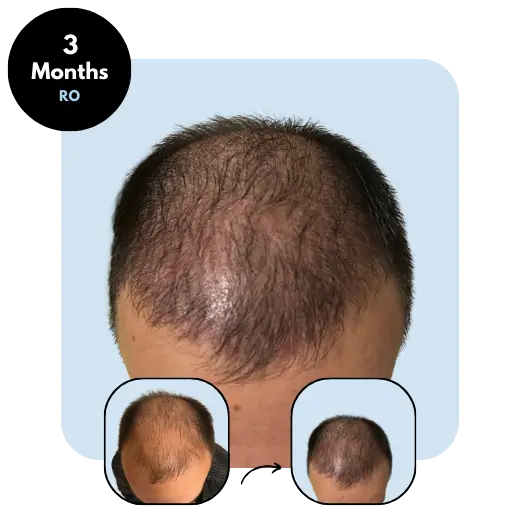
Get our free ebook
We believe in a holistic approach to hair restoration. This includes aiming to do as much as you can yourself by adopting healthy habits and practices. By doing so in advance of your hair restoration procedure as well as afterwards, you will get the best result possible.

Let’s build your hair plan together
No pressure. Just honest advice from specialists who care about results — and you.
we are online
Table of Contents
- Expected Hair Transplant Results After 3 Months
- 3 Months After a Hair Transplant: Entering the Anagen Phase
- Hair transplant after 3 months: Pictures
- 3 months after hair transplant: Challenges & Solutions
- Aftercare: Key to Optimal Results 3 Months Post-Transplant
- Final Thoughts: Hair Transplant After 3 Months
- Frequently Asked Questions
- About Ideal of MeD
3 Months After a Hair Transplant: Entering the Anagen Phase
As you transition into the anagen phase of the hair transplant cycle, you can look forward to fewer side effects and benefit from enhanced hair restoration owing to continued aftercare.
Whether you have had a FUE, DHI or an Ideal of MeD combination hair transplant, up until the 3rd month following your hair transplant, you will have experienced almost all the minor side effects of hair restoration. Amongst these side effects are redness, swelling, discomfort, crusting or scabbing and most notably, hair loss known as shedding.
Hair shedding after a hair transplant is a common and natural occurrence as a result of interrupted oxygen supply to the follicles during the extraction and implantation of hair grafts. The good news is that underneath the scalp, your new hair is starting to develop, taking you into the next phase of your hair restoration journey. You should still be using your complimentary Ideal of MeD post-surgery hair products, which is providing your hair and body with everything it needs to ensure maximum hair regrowth.

Get answers from other hair transplant patients.
100% free community
Verified hair transplant patients
Genuine advice based on experience

Hair Growth 3 Months After Hair Transplant Surgery
Throughout the first 3 months, the transplanted hair follicles are dormant, meaning that there is no growth observed. The reason for this is that the hair shifts into the telogen phase of the hair growth cycle immediately after hair restoration surgery.
Around 3 to 4 months after your hair transplant, your natural hair cycle determining the exact time, your hair will transition into the anagen phase of the hair growth cycle. If you do not notice any growth in the recipient area 3 months after hair transplantation, you may simply need to give your hair a few more weeks as every individual’s hair growth cycle will vary from another.
The transition into the anagen phase marks a significant stride in the development of hair transplant results after 3 months because this phase marks the first step in the development of hair growth and density. The new hair may appear thin and slightly sparse 3 months after hair transplantation but will continue to thicken throughout the next few months of growth as more hair starts to grow.
BECOME YOUR IDEAL ME
Book a Free Consultation
we are online
Effects From the Surgery 3 Months After a Hair Transplant
Fortunately, most of the side effects of your hair transplant are over and done within 3 months post-hair restoration procedure. However, it is possible that you may experience these minor side effects owing to the new hair growth appearing in this period.
White pimple formations in the recipient area: Small pimple-like, ingrown hair patterns may form in the recipient zone once the hair begins to grow around month 3. These pimple formations suggest that new hair shafts are making their way to the epidermis and will soon push through the surface the more they continue to grow.
Numbness after hair transplant: Although it is likely that you will have regained sensitivity by 3 months after your hair transplant, it is normal to still be experiencing some numbness in the scalp. This occurs due to nerve damage inflicted during the hair transplant surgery, in which small wounds are forged in the scalp during the hair implantation process. As the nerves begin to regenerate leading to regained sensitivity in the scalp, you may begin noticing sensations of itchiness or tingling.
Patchiness: The occurs because the individual hair shafts start growing at different times which leads to longer hair in some sections and shorter hair in other regions of the recipient zone.
Factors influencing your hair transplant results after 3 months
The outcome of hair transplantation is dependent on a few factors. Although some of these factors are not in your control, it’s important to ensure they are considered when measuring the success of your hair transplant results after 3 months. The factors influencing your results at this point in the recovery process include:
- Consistent and quality aftercare
- Additional treatments designed to boost hair growth and recovery after hair transplantation
- Your hair density and quantity of accessible donor hair before your hair transplantation procedure
- Your natural hair growth cycle
- Your genetics
When you look in the mirror
Once you begin observing hair growth in the recipient area, the whole procedure and recovery process begins feeling a lot more worth it. The 3-month mark symbolises the birth of a newly found confidence in many as they look forward to increased density in problematic areas and the excitement builds in anticipation for a new hairline owing to great strides in science and your decision to undergo hair transplantation!
The anagen phase in which the hair transitions around this time in the recovery process will last for years to come. Although you may only observe the early signs of hair growth now, your hair growth will become more and more prominent in the next few months. Check out our pages dedicated to hair transplant results after 6 months and hair transplant results after 1 year for more information on hair growth progression and what you can expect to see in the mirror in months to come.

Hi! I’m Alona, your expert in achieving the best results from hair transplant procedures and maintaining long-lasting vitality in your hair.
Feel free to connect with one of Ideal of MeD’s specialists today! Don’t hesitate to reach out if you have any questions or need guidance regarding hair transplant results. We’re here to support you on your journey to achieving the best possible outcomes for your hair transplant and maintaining its vibrancy!
Hair transplant after 3 months: Pictures
Here are some remarkable hair transplant after 3 months pictures from our valued patients who chose to embark on the journey of hair restoration through our expert hair transplant procedures. These photos, taken three months after their respective treatments, illustrate the gradual but impressive transformation our patients have experienced.
It’s important to note that three months is a relatively early stage in the hair transplant recovery process. Full results often take several more months, with the final outcome typically becoming evident around the one-year mark. Patience, consistent post-operative care, and open communication with your medical team are key to maximizing the success of your hair transplant and achieving the best possible results over time.


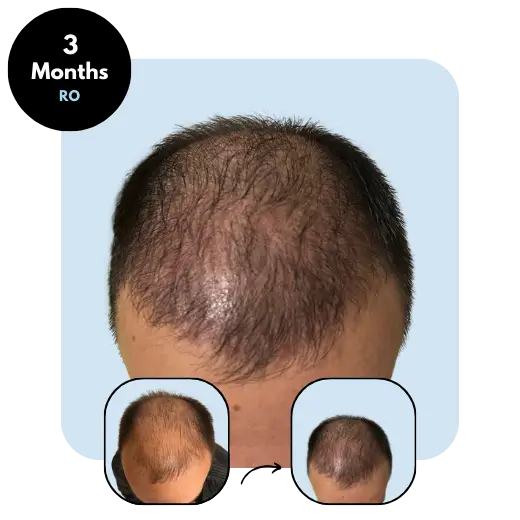
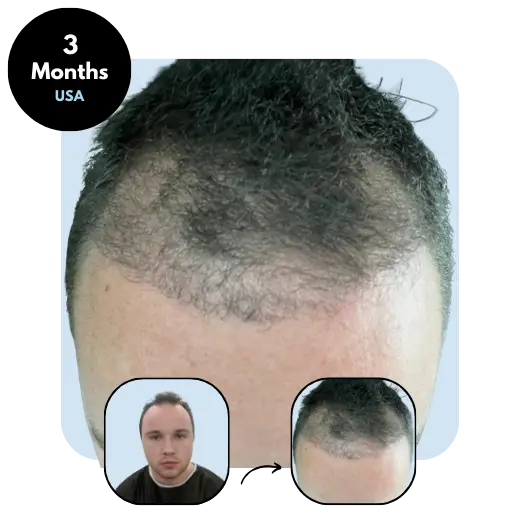
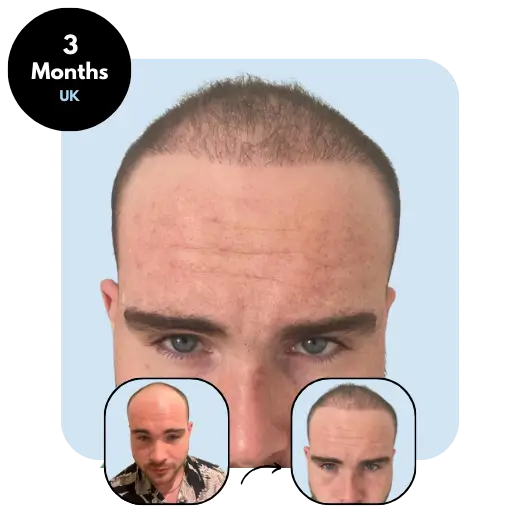
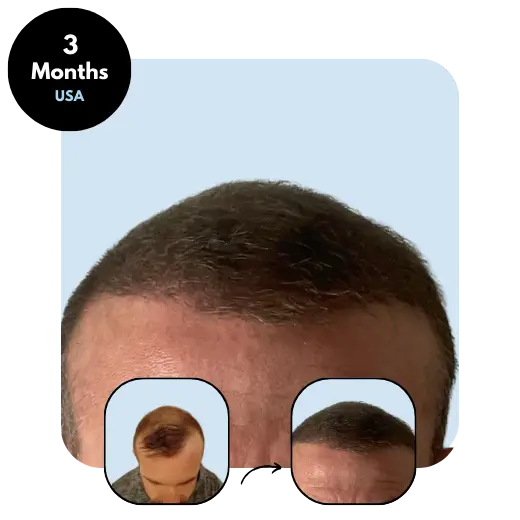
3 months after hair transplant: Challenges & Solutions
At the 3-month mark following a hair transplant, patients may encounter various challenges as they await more visible results. Understanding these challenges and knowing how to overcome them can help you stay patient and focused on your hair restoration journey.
- Slow Growth: One common challenge is the perception of slow hair growth. At this stage, not all transplanted hair will have started growing, and the existing hairs may still be fine and less noticeable. Patience is key, as hair growth typically accelerates in the coming months.
- Shock Loss: Some patients experience shock loss, which is the temporary shedding of existing hair around the transplant area. This can be alarming, but it’s a normal part of the process. The lost hair will gradually regrow.
- Uneven Growth: Hair may not grow uniformly across the transplanted area, leading to uneven results. This can be addressed through proper post-operative care and by following your surgeon’s instructions.
- Itchiness and Discomfort: Itchiness and discomfort can be bothersome as hair follicles heal. Avoid scratching the transplant site to prevent damage and consult your surgeon if the discomfort persists.
- Anxiety and Self-Esteem: Many patients experience anxiety about the final outcome of their transplant. It’s essential to manage these feelings by focusing on the gradual progress and seeking support from your healthcare provider or a therapist if needed.

Patience is Key at the 3 Months Mark After Your Hair Transplant
Around the three-month mark, the emergence of new hairs is to be anticipated. These newly sprouted hairs may appear delicate and wispy, characterized by their thin and almost transparent nature. This initial appearance is a result of their early stage and lack of maturity.
In my experience, it’s crucial to maintain patience during this phase as your new hair gradually develops. There’s no need for concern if these emerging hairs resemble the fineness of body hair. As time progresses, you can expect these hairs to thicken and gain strength, ultimately contributing to a fuller and healthier appearance.
Get our free ebook
We believe in a holistic approach to hair restoration. This includes aiming to do as much as you can yourself by adopting healthy habits and practices. By doing so in advance of your hair restoration procedure as well as afterwards, you will get the best result possible.

Aftercare: Key to Optimal Results 3 Months Post-Transplant
Reaching the three-month milestone post-hair transplant is a significant achievement in your recovery journey. At this stage, it’s essential to continue providing the right care and maintenance to ensure the optimal growth and appearance of your transplanted hair. You will get instructions from the medical team that conducte your hair trandplant regarding after care, always follow those.
General guidelines include:
• Use Gentle Shampooing and Conditioning
Stick to a gentle, sulfate-free shampoo and conditioner to avoid harsh chemicals that can potentially damage the newly transplanted hair. Wash your hair with lukewarm water, as extremely hot water can be harsh on your scalp. When shampooing, use your fingertips to gently massage the scalp.
Avoid vigorous rubbing or scrubbing. Make sure to rinse your hair thoroughly to remove any shampoo residue. While it’s important to keep your scalp clean, avoid overwashing your hair, as excessive washing can strip away natural oils and may disrupt the healing process.
• Pat-Dry Your Hair:
After washing, pat your hair dry with a clean, soft towel. Avoid vigorous rubbing or using a hairdryer on high heat settings, as it can damage fragile, newly transplanted hairs.
• Styling Techniques:
Be cautious with styling products and tools during this phase. Avoid excessive heat styling and tight hairstyles that may pull on the transplanted hairs. You can use a wide-toothed comb or a soft brush to style your hair gently.
Consider consulting with your surgeon for specific styling recommendations based on your unique case.
• Regular Follow-Up:
Throughout your hair restoration journey, our hair transplant experts will ensure you continue to observe healing and hair growth by contacting you every month or two. This also allows you the opportunity to ask any questions you may have about side effects that you may have observed since the last time you spoke and advise you on what you can expect in the next few until you speak again.
Keep in mind that the full results of your hair transplant may not be evident until several months or even a year after the procedure. Be patient and maintain your care routine consistently.

Maintain A Balanced Diet For Optimal Recovery After Your Hair Transplant
Maintaining a balanced and nutritious diet is, in my personal opinion, an important component of ensuring successful hair transplant recovery 3 months after a hair transplant. Minimize your consumption of sugary and processed foods, as they can contribute to inflammation and potentially impact hair health. Opt for whole, unprocessed foods whenever possible.
⚈ Protein-Rich Foods: Prioritize protein sources such as lean meats, fish, eggs, and plant-based options like beans and lentils. Protein is essential for hair growth and can aid in the development of strong and healthy hair follicles.
⚈ Nutrient-Dense Fruits and Vegetables: Incorporate a variety of colorful fruits and vegetables into your daily meals. These are packed with vitamins and antioxidants that support overall health, including the health of your hair and scalp.
⚈ Omega-3 Fatty Acids: Consume foods rich in omega-3 fatty acids, such as salmon, walnuts, and flaxseeds. Omega-3s promote a healthy scalp and can help reduce inflammation, which is beneficial during the recovery process.
⚈ Stay Hydrated: Proper hydration is essential for overall health and is believed to contribute to hair health as well. Drinking an adequate amount of water helps keep your hair and scalp hydrated, promoting a conducive environment for hair growth.
⚈ Iron and Biotin: Ensure your diet includes foods rich in iron (e.g., spinach, red meat) and biotin (e.g., eggs, nuts) as they are known to support hair health and growth.
Final Thoughts: Hair Transplant After 3 Months
If you have not yet undergone hair transplantation, you are more than likely considering the benefits that a hair transplant will have on your patchy or balding hairline. Fortunately for you, you’ve navigated your way to the Ideal hair transplant clinic.
At three months post-transplant, you stand at the threshold of a remarkable transformation. The small, delicate hairs that have emerged are harbingers of a fuller, more confident future. Yet, it’s crucial to keep in mind that your hair restoration journey is far from over.
The road ahead will continue to unfold, and patience remains your steadfast companion. As you move forward, maintain the diligent care routines you’ve learned and consult with your transplant surgeon as needed. Remember, the final results of your hair transplant may take time to fully manifest, often around one year or more.
Are you ready to embark on a hair transplant journey? Check out our highly competitive all-inclusive packages and book your free consultation with our hair transplant experts at Ideal of MeD. now!
Questions? We’ve
heard them all.
From pricing to pain levels and healing time — here
are the answers Ideal of MeD patients ask most
before starting their journey.
Additional treatments such as Mesotherapy and Hyperbaric Oxygen Therapy (HBOT) have been found to boost healing hair growth, resulting in a speedier recovery process.
You will start observing hair growth in the recipient area around 3 to 4 months after a hair transplant once the hair transitions from the telogen phase to the anagen phase of the hair growth cycle. For information on the hair growth cycle and other factors that may influence your hair transplant outcome, check out our “Hair transplant results”.
Most side effects of hair transplantation are experienced within the first 3 months following your hair restoration procedure. It is possible that you may still observe what appears to be white pimples or ingrown hairs around this time frame or within the next couple of months as the hair begins to grow. These will go away once the hair penetrates the epidermis and begins growing out of the scalp.
Following this occurrence, you are unlikely to struggle with any other side effects of hair transplantation. For the best hair transplant results after 3 months, it is advised that you commit to a regular hair transplant aftercare regime consisting of hair transplant-friendly products. Our Ideal of MeD. Hair Restoration Products are included in all of our hair transplant packages so that you too can benefit from increased hair growth and a speedier recovery post hair transplantation.
Around 3 months after hair restoration, you will observe new hair growth. The hair will appear thin at this time but overall hair density will increase within the next few months. For any further questions about what you may expect after 3 months, request a call from one of our experts when it is most convenient for you by clicking the call button in the bottom right of your screen or simply book a free consultation if you’re ready to start your hair restoration journey.
Hair fall is a common, completely normal occurrence following a hair transplant. This hair loss is more commonly referred to as shedding and is a result of trauma to the follicles during the hair transplant procedure and does not have any bearing on your final hair transplant results. For more information on shedding, check out “Hair Transplant Before and After“.
About Ideal of MeD

Sources & expertise
We have used the following sources to compile this page:
Medscape: Hair Transplantation Treatment & Management
Information checked by an expert
The information on this page is checked by Alona Arel. She’s an expert on beauty and longevity and often asked to share her knowledge. For example for Healthline and Lifehacker.
The information on this page was last updated on April 9, 2025
Awards & accreditations


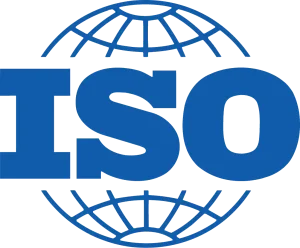
Ideal of MeD Hair Transplant
We’re you’re number 1 destination for a hair transplant in Turkey. Don’t forget to check out our other pages about hair transplant results, or read up on our exclusive DHI & FUE Combination Surgery.
